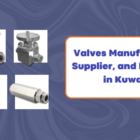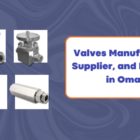A Versatile Range of Reliable Instrument Accessories
Mcneil Instruments Inc. stands as a global leader in the manufacturing and export of high-quality instrument accessories. With decades of experience in the metals industry, the company has seen consistent growth, thanks to its unwavering commitment to customer satisfaction. Each product is a reflection of the company’s dedication to excellence in quality, packaging, timely delivery, and competitive pricing, paired with outstanding after-sales service.
The management team, boasting 39 years of expertise in product development, designing, production, and quality controls, has played a crucial role in shaping Mcneil Instruments into a trusted name worldwide. Every employee at Mcneil Instruments is focused on delivering superior products that meet the highest industry standards.
Areas of Application
Mcneil Instruments’ products find extensive application in a variety of industries, including chemical plants, the oil and gas industry, mechanical engineering, industrial furnaces, and marine engineering. These sectors rely on the company’s stainless steel pipes and other metal products, all crafted from premium individual metal sheets using advanced forming techniques.
Rigorous Testing & Inspection
At Mcneil Instruments, quality comes first. Every product undergoes rigorous in-house testing to ensure it meets both mandatory and customer-specified standards. Testing can also be conducted at recognized third-party laboratories, providing customers with the peace of mind that the products meet global industry standards. The company has worked with several notable Third Party Inspection Agencies (TPIA), further demonstrating its commitment to quality assurance.
Instrument Accessories by Mcneil Instruments
Mcneil Instruments is a leading name in the manufacturing and supply of high-quality instrument accessories. These accessories play a crucial role in various industrial applications, ensuring seamless operations, safety, and efficiency. Below is a detailed overview of the products manufactured by Mcneil Instruments, highlighting their features, applications, and types.
1. Condensate Pot
Mcneil Instruments manufactures superior-quality condensate pots, supplying them globally at competitive prices. These pots are essential for trapping and removing condensate from steam lines, ensuring a smooth flow of steam.
Types of Condensate Pots:
- Two Ports Condensate Pot: Ideal for simple steam applications.
- Three Ports Condensate Pot: Ensures better steam management.
- Four Ports Condensate Pot: Suitable for more complex steam systems.
2. Air Header
Air headers by Mcneil Instruments control air pressure in transmission tubes and are widely used across industries. Available in multiple configurations, they help manage fluid and gas distribution effectively.
Types of Air Headers:
- 4-Way Air Header: For smaller systems.
- 6-Way Air Header: Suitable for medium-sized installations.
- 8-Way Air Header: Handles larger volumes of air.
- 10-Way to 16-Way Air Headers: For complex systems requiring multiple connections.
3. Pipe Clamp
Mcneil Instruments is a globally recognized pipe clamp manufacturer, offering products for various industrial applications. These clamps ensure stability and safety in pipe installations, especially in hydraulic systems.
Key Features:
- Hydraulic Pipe Clamps: For fluid systems.
- Standard Tube Clamps: Reliable and durable for various uses.
- Heavy-Duty Tube Clamps: Ideal for high-pressure pipelines.
4. Syphon Tube/Pipe
Syphon tubes protect measuring instruments from high temperatures by creating a cooling chamber. Mcneil Instruments manufactures syphons approved by Saudi Aramco and EIL, offering robust solutions for industries worldwide.
Types of Syphon Tubes:
- Flexible Syphon Tubes: Versatile for tight spaces.
- Rigid Syphon Pipes: Durable for long-distance fluid transfer.
- Automatic Syphon Tubes: Automated flow control for efficiency.
5. Copper Tube
Mcneil Instruments specializes in manufacturing copper tubes used in various applications like plumbing, HVAC, and electrical systems. Their copper tubes are known for durability, flexibility, and resistance to corrosion.
Specifications:
- Outer Diameter: 4.76 MM to 19.05 MM.
- Wall Thickness: 0.50 MM to 1.62 MM.
- Unit Length: As per order.
6. Snubber
Snubbers by Mcneil Instruments are designed to protect electronic circuits from voltage spikes. They ensure the longevity and reliability of equipment in various applications.
Features:
- Test Pressure: 25°C at room temperature.
- Material: A105, A276 SS304, SS316, Monel.
7. Thermowell
Mcneil Instruments manufactures thermowells that protect sensing instruments from pressure and high-velocity process media. They allow for instrument removal without shutting down operations.
Types of Thermowells:
- Straight Shank Thermowell: For moderate conditions.
- Tapered Thermowell: Ideal for high-velocity applications.
- Flanged Thermowell: Easy to install and maintain.
8. Quick Release Coupling
Quick Release Couplings from Mcneil Instruments enable quick and reliable connection/disconnection of fluid lines, ensuring smooth operations in hydraulic, pneumatic, and water applications.
Types of Quick Release Couplings:
- Hydraulic Quick Release: For high-pressure fluids.
- Pneumatic Quick Release: For air-powered equipment.
- Flat Face Quick Release: Reduces spillage during disconnection.
9. Flushing Ring
The flushing ring by Mcneil Instruments is used in various industrial applications to ensure clean operations in systems involving diaphragm seals. Made from high-quality materials, these rings are vital in preventing process contamination.
Key Features:
- Material Options: Monel, Inconel, Stainless Steel, Hastelloy.
- Types: Drip Ring, Diaphragm Seal, Bleed Ring.
These instrument accessories manufactured by Mcneil Instruments stand out in terms of quality, precision, and durability. Each product is tailored to meet the unique demands of industrial applications, ensuring optimal performance and reliability across sectors.








